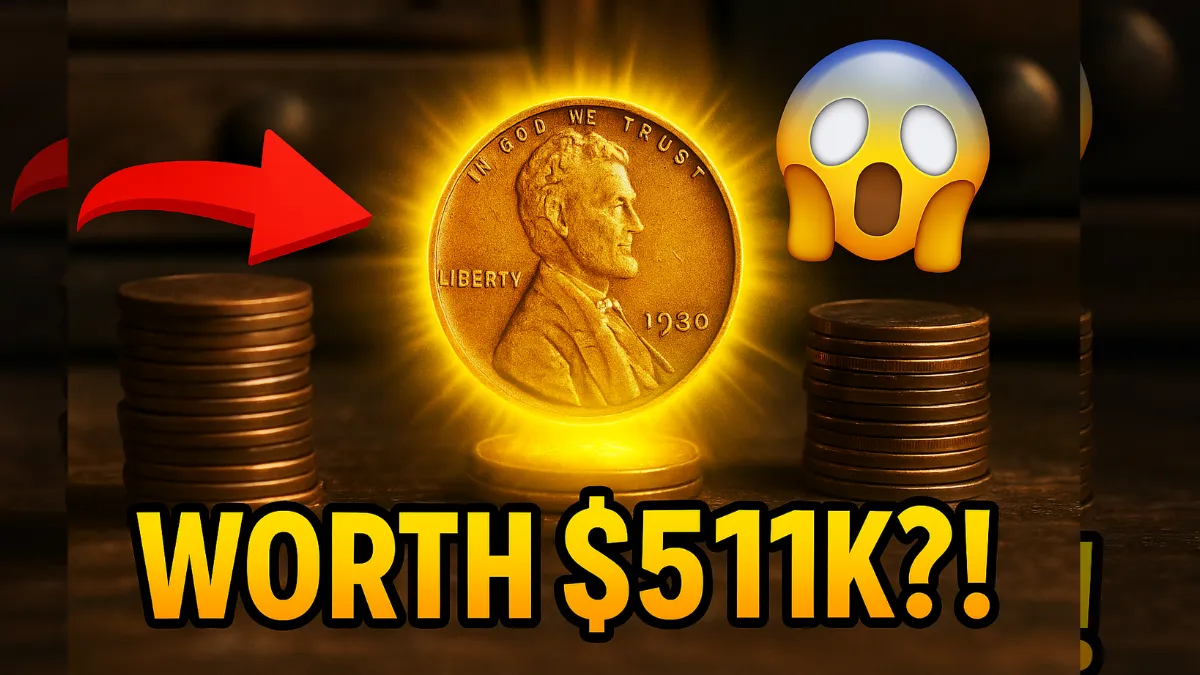Most of us toss pennies into jars, forget them in pockets, or let them gather dust under car seats. They’re often seen as the least valuable part of our change. But what if one of those tiny coins was actually worth hundreds of thousands of dollars?
Believe it or not, that’s exactly the case with one extraordinary coin—the Lincoln Wheat Penny. It might just be the hidden treasure sitting unnoticed in your spare change.
A Coin That Changed U.S. History
The Lincoln Wheat Penny made its debut in 1909, marking the 100th anniversary of President Abraham Lincoln’s birth. It was the first time a real person—rather than an allegorical figure like Lady Liberty—was featured on a U.S. coin.
Renowned engraver Victor David Brenner designed the coin, with Lincoln’s portrait on the front (or “obverse”) and two wheat ears on the reverse, earning it the nickname “Wheat Penny.” The coin was minted from 1909 until 1958, and while most of them were produced in huge quantities, a few rare editions are now worth eye-popping sums—up to $510,000 in some cases.
A Valuable Mistake from Wartime
One of the rarest and most sought-after Wheat Pennies dates back to 1943. During World War II, copper was a critical resource for the war effort, so the U.S. Mint switched to making pennies out of steel coated with zinc.
However, a small number of copper blanks from the previous year mistakenly remained in the minting presses. These rare 1943 copper pennies were struck by accident—and only about 20 are known to exist today.
If you’re lucky enough to find one, it could be worth hundreds of thousands of dollars. Want to test yours? Grab a magnet. Steel pennies will stick. Copper ones won’t. If yours doesn’t cling to the magnet, you might be holding a very valuable mistake.
Other Lincoln Pennies That Might Be Worth Big Bucks
The 1943 copper penny is the holy grail, but there are other Lincoln Wheat Pennies that collectors will pay top dollar for:
- 1909-S VDB – Minted in San Francisco with the designer’s initials, and only 484,000 were made.
- 1914-D – A scarce edition produced in Denver that’s tough to find in circulation.
- 1922 “No D” – A Denver coin missing its mint mark due to a die error.
- 1955 Double Die – This coin shows a striking visual doubling of letters and numbers, making it a collector favorite.
These coins are more than currency—they’re small pieces of history, and their rarity drives up their value among numismatists.
Spotting a Valuable Penny
If you think you’ve found a special coin, start by examining the date and mint mark. Mint marks are located just below the year:
- “D” = Denver
- “S” = San Francisco
- No mark = Philadelphia
Some year and mint mark combinations are much rarer than others. And if you suspect you have a 1943 copper penny, remember: don’t clean it. Cleaning can reduce a coin’s value. Instead, handle it by the edges and store it in a safe place.
Consider sending potentially valuable finds to a reputable coin grading service. These services can confirm authenticity, assign a grade, and seal the coin for protection and long-term value.
The Thrill of the Hunt
Here’s what makes coin collecting so exciting: rare coins can still be found in everyday change. You don’t need a metal detector or a treasure map—just a little knowledge and a sharp eye. Whether it’s a jar of old coins or your latest grocery store haul, you never know when you’ll stumble across a small fortune.
More Than Just Spare Change
The Lincoln Wheat Penny proves that even the most overlooked items can carry immense value. With its rich history, unique design, and rare minting errors, it’s a perfect example of how ordinary objects can become extraordinary collectibles.
So next time you’re handed some change, don’t ignore the pennies. Give them a closer look—one of them might just be your lucky ticket to a collector’s dream.
FAQs
Q1: How can I tell if my 1943 penny is copper or steel?
Use a magnet! Steel pennies stick to magnets. If your 1943 penny doesn’t stick, it could be a rare copper version.
Q2: What does the “VDB” on a 1909 penny stand for?
“VDB” are the initials of the coin’s designer, Victor David Brenner. They appear on some 1909 Lincoln Wheat Pennies, making them highly collectible.
Q3: Is cleaning a penny a good idea before selling it?
No—cleaning a coin can lower its value. Collectors prefer coins in original condition, even if they appear dirty or worn.
Q4: Where is the mint mark located on a Lincoln Wheat Penny?
The mint mark is just below the date on the front of the coin. It tells you which U.S. Mint location produced the penny.

